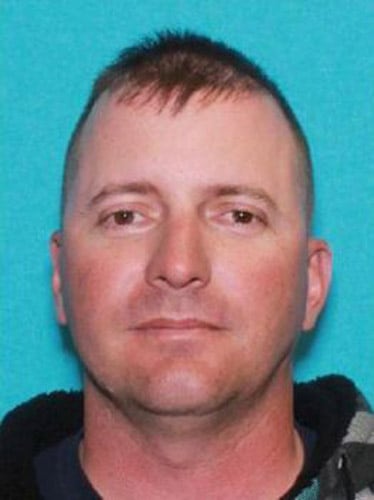![APTOPIX Obama Fort Hood [ID=21709205]](http://www.gannett-cdn.com/-mm-/5515bad9bf5d9ec7a6120825d31afee70a6a1d54/r=500x315/local/-/media/2015/01/13/GGM/MilitaryTimes/635567646392792748-TNS-Fort-Hood-Shooting-AP-1.jpg)
An Army investigation into the April shooting at Fort Hood, Texas, did not find anything in the assailant's background, medical or military profiles that might have provided an early warning for potential violence, according to findings released Friday, however the soldier was undergoing treatment for several medical conditions.
But the investigation noted that when Spc. Ivan Lopez-Lopez first arrived at Fort Hood, his unit was experiencing "significant turnover in leadership" and struggling with "high operational tempo and manning shortages."
To help prevent future shootings, the report also recommends examining whether soldiers should be required to register personally-owned weapons with their command.
Lopez-Lopez, 34, opened fire April 2, 2014, after an argument. He then left and drove away, shooting at times from his car. Three soldiers were killed, gunned down in separate locations. Twelve others were wounded.
Lopez-Lopez killed himself after he was confronted by a military police officer.
Killed that day were Sgt. 1st Class Danny Ferguson, Sgt. Timothy Owens and Staff Sgt. Carlos Lazaney-Rodriguez.
Ferguson, who had just returned from Afghanistan at the time of the shooting, is believed to have died while trying to hold shut a door that would have led the gunman to a room packed with military personnel.
Ferguson, a transportation management specialist, joined the Army in 1993. He had deployed four times since 2003.
Owens, who was shot in the chest, was an Iraq war veteran.
Lazaney-Rodriguez joined the Army in 1994, deploying to Iraq twice and once to Kuwait.
During the Army's months-long investigation into the shooting, an investigation team interviewed and obtained sworn statements from 169 witnesses. The team also reviewed materials and statements gathered during an earlier criminal investigation.
"We find no indication in his medical and personnel records suggesting Spc. Lopez-Lopez was likely to commit a violent act," Lt. Gen. Joseph Martz, who led the investigation, wrote in the report.
The investigation also determined that no "single event or stressor, in isolation, was the cause of the shooting," and "there were no clear warning signs," according to the Army.
However, a substantive review of Lopez-Lopez's background found several factors that may have contributed to the soldier's state of mind, the Army said.
He recently experienced the death of two close family members, was facing financial difficulties and was undergoing a variety of treatment for behavioral health conditions ranging from depression and anxiety to sleep disturbance. He also had only recently arrived at Fort Hood from a previous assignment, the Army said.
The Army investigation also determined that Lopez-Lopez's chain of command would have had difficulty recognizing personal problems or providing help that may have been needed.
"Since risk assessment tools depend on self-reporting, they are subject to the soldier's willingness to identify risk factors accurately," the report states.
The report also noted that Lopez-Lopez could sometimes be "misleading or deceptive."

This undated image provided by the Texas Department of Public Safety shows Army Spc. Ivan Lopez-Lopez.
Photo Credit: (AP Photo/Texas Department of Public Safety)
In addition, the report found that when Lopez-Lopez first got to Fort Hood, "the unit experienced significant turnover in leadership" and was facing "high operational tempo and manning shortages."
This could have led to leaders being "unable to provide adequate time to train, mentor and lead," according to the Army.
"In the absence of a system capable of identifying Lopez-Lopez as a threat, and because the unit was unaware and unable to address the variety of stressors in Lopez-Lopez's life, Fort Hood was not able to prevent the shooting," Martz wrote.
The report includes several recommendations to improve unit leaders' interaction with new soldiers.
Included among them is the recommendation to examine whether soldiers should be required to register personally-owned weapons with their command.
Lopez-Lopez bought two weapons without the knowledge of his leadership. One was stolen just weeks before the shooting, and the other was used in the April shooting.
"This impacts a commander's ability to maintain situational awareness over a service member and their actions involving a firearm that could be concealed and brought onto the installation for unauthorized purposes," the report states.
The shooting was the second such incident on Fort Hood in recent years. In 2009, 13 people were killed by then-Maj. Nidal Hasan, who has said he was angry about being deployed to Afghanistan and wanted to protect Islamic and Taliban leaders from U.S. troops.
Lopez had almost 15 years of service, spending nine years in the Puerto Rico National Guard as an infantryman, including a 12-month deployment to the Sinai in 2007, before going on active duty in 2008, officials have said.
While on active duty, the accused gunman served as a motor transport operator and was assigned to 4th Brigade Combat Team, 1st Armored Division, at Fort Bliss, Texas. He arrived at Fort Hood in February 2014, after reclassing as an 88M, or motor transport operator, and was assigned to the 154th Transportation Company, which is part of the 13th Sustainment Command.
He deployed to Iraq in August 2011 and served a four-month tour.
Michelle Tan is the editor of Army Times and Air Force Times. She has covered the military for Military Times since 2005, and has embedded with U.S. troops in Iraq, Afghanistan, Kuwait, Haiti, Gabon and the Horn of Africa.





